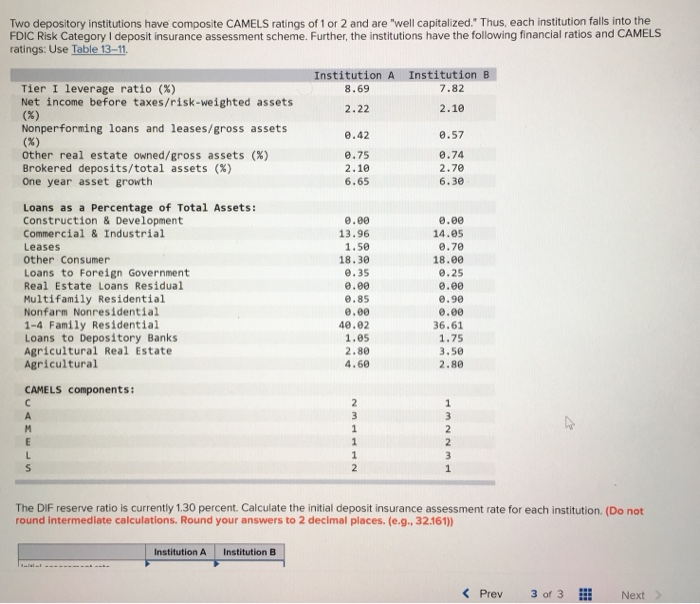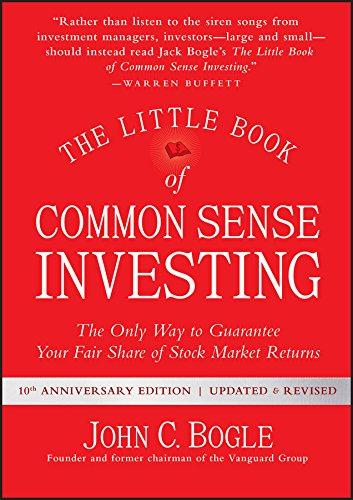Two depository Institutions have composite CAMELS ratings of 1 or 2 and are well capitalized." Thus, each institution falls into the FDIC Risk Category I deposit insurance assessment scheme. Further, the institutions have the following financial ratios and CAMELS ratings: Use Table 13-11 Institution A 8.69 2.22 Institution B 7.82 Tier I leverage ratio (%) Net income before taxes/risk-weighted assets 2.10 Nonperforming loans and leases/gross assets 2.57 other real estate owned/gross assets (%) Brokered deposits/total assets (%) One year asset growth 0.42 0.75 2.10 6.65 @.74 2.70 6.30 Loans as a Percentage of Total Assets: Construction & Development Commercial & Industrial Leases Other Consumer Loans to Foreign Government Real Estate Loans Residual Multifamily Residential Nonfarm Nonresidential 1-4 Family Residential Loans to Depository Banks Agricultural Real Estate Agricultural 0.00 13.96 1.50 18.30 0.35 e.ee 0.85 0.00 40.02 1.05 2.80 4.60 0.00 14.05 0.70 18.00 0.25 0.00 0.90 @.00 36.61 1.75 3.50 2.80 CAMELS components: NMN The DIF reserve ratio is currently 1.30 percent. Calculate the initial deposit insurance assessment rate for each institution. (Do not round Intermediate calculations. Round your answers to 2 decimal places. (e.g., 32.161)) Institution A Institution B The DIF reserve ratio is currently 1.30 percent. Calculate the initial deposit insurance assessment rate for each institution. (Do not round intermediate calculations. Round your answers to 2 decimal places. (e.g., 32.161)) Institution A Institution B Initial assessment rate institution Institution Initial assessment rate CAMELS Component Weights CAMELS Component Weight 25% Two depository Institutions have composite CAMELS ratings of 1 or 2 and are well capitalized." Thus, each institution falls into the FDIC Risk Category I deposit insurance assessment scheme. Further, the institutions have the following financial ratios and CAMELS ratings: Use Table 13-11 Institution A 8.69 2.22 Institution B 7.82 Tier I leverage ratio (%) Net income before taxes/risk-weighted assets 2.10 Nonperforming loans and leases/gross assets 2.57 other real estate owned/gross assets (%) Brokered deposits/total assets (%) One year asset growth 0.42 0.75 2.10 6.65 @.74 2.70 6.30 Loans as a Percentage of Total Assets: Construction & Development Commercial & Industrial Leases Other Consumer Loans to Foreign Government Real Estate Loans Residual Multifamily Residential Nonfarm Nonresidential 1-4 Family Residential Loans to Depository Banks Agricultural Real Estate Agricultural 0.00 13.96 1.50 18.30 0.35 e.ee 0.85 0.00 40.02 1.05 2.80 4.60 0.00 14.05 0.70 18.00 0.25 0.00 0.90 @.00 36.61 1.75 3.50 2.80 CAMELS components: NMN The DIF reserve ratio is currently 1.30 percent. Calculate the initial deposit insurance assessment rate for each institution. (Do not round Intermediate calculations. Round your answers to 2 decimal places. (e.g., 32.161)) Institution A Institution B The DIF reserve ratio is currently 1.30 percent. Calculate the initial deposit insurance assessment rate for each institution. (Do not round intermediate calculations. Round your answers to 2 decimal places. (e.g., 32.161)) Institution A Institution B Initial assessment rate institution Institution Initial assessment rate CAMELS Component Weights CAMELS Component Weight 25%









